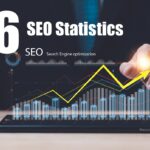In the dynamic sphere of digital marketing, a tactical standoff persists between two formidable strategies: paid search and paid social. This rivalry encompasses distinct approaches to online advertising, where brands vie for dominance in reaching their target audiences. Paid search, a domain largely dominated by Google, hinges on tapping into consumer behavior at a critical juncture—the precipice of purchase intent. Advertisers employ keyword bidding to position their offerings in front of users who exhibit a readiness to convert, capitalizing on the immediacy of their intent.
Conversely, paid social advertising exploits the expansive and engaged user bases of social media platforms to deploy ads that resonate on a more emotive level. These advertisements are not just mere interruptions but are intricately woven into the fabric of social interaction, designed to foster brand affinity and prompt spontaneous purchases. Through the strategic use of demographics and user interests, paid social campaigns deliver personalized content that seeks to not only capture attention but to cement brand presence in the consciousness of consumers.
This ongoing skirmish between paid search and paid social has become a central debate among advertisers who aim to refine their campaigns to achieve peak effectiveness. Paid search is lauded for its directness and agility, appealing to businesses that prize immediate transactional outcomes. However, the intense competition inherent in this space presents a double-edged sword; the abundance of choices available to consumers can just as easily divert them towards competitors.
Paid social, while it may occasionally be perceived as overstepping boundaries, excels in its capacity to build a narrative around a brand, creating a tapestry of engagement that extends beyond the initial interaction. The use of rich, visually compelling ad formats on platforms like Facebook and Instagram empowers marketers to interrupt the passive scroll of users’ feeds with content that is both engaging and memorable. This approach is particularly adept at nurturing a sustained dialogue with customers, which is critical for cultivating long-term brand loyalty.
The decision to employ paid search or paid social is not one to be taken lightly; advertisers must undertake a meticulous evaluation of their objectives and the specific nuances of their target audience. Paid search is inherently transactional, engineered for quick responses and direct engagement with consumers who have signaled a clear interest in making a purchase. In contrast, paid social is more about the slow burn—building and reinforcing a brand’s identity over time and fostering a community of engaged followers.
As digital marketing continues to evolve, staying abreast of emerging trends and technological advancements becomes indispensable for advertisers who aspire to maintain an edge over their competition. With social media platforms boasting millions of active users daily, the opportunities for expansive reach and surgical precision in targeting are unparalleled. Meanwhile, search engines remain a steadfast resource for capturing and capitalizing on consumer intent at a moment’s notice.
The dialogue surrounding the merits of paid search versus paid social is not one likely to be resolved any time soon, as each approach bears its unique set of advantages and challenges. The key to navigating this dichotomy lies in recognizing that neither strategy is mutually exclusive; rather, they are complementary facets of a comprehensive digital marketing strategy. Success in this realm is achieved through a synergistic application of both paid search and paid social, each leveraged for their respective strengths in alignment with the advertiser’s overarching goals.
The digital advertising landscape is characterized by its constant flux, demanding adaptability and innovative thinking from marketers. Those who skillfully orchestrate a blend of paid search and paid social strategies are well-positioned to flourish, harnessing the full potential of each to create a cohesive and compelling narrative that resonates with consumers and drives business growth. In sum, the future of digital advertising will continue to be shaped by the strategic interplay of these two dominant forces, with astute advertisers leveraging the full spectrum of tools at their disposal to achieve their marketing ambitions.











